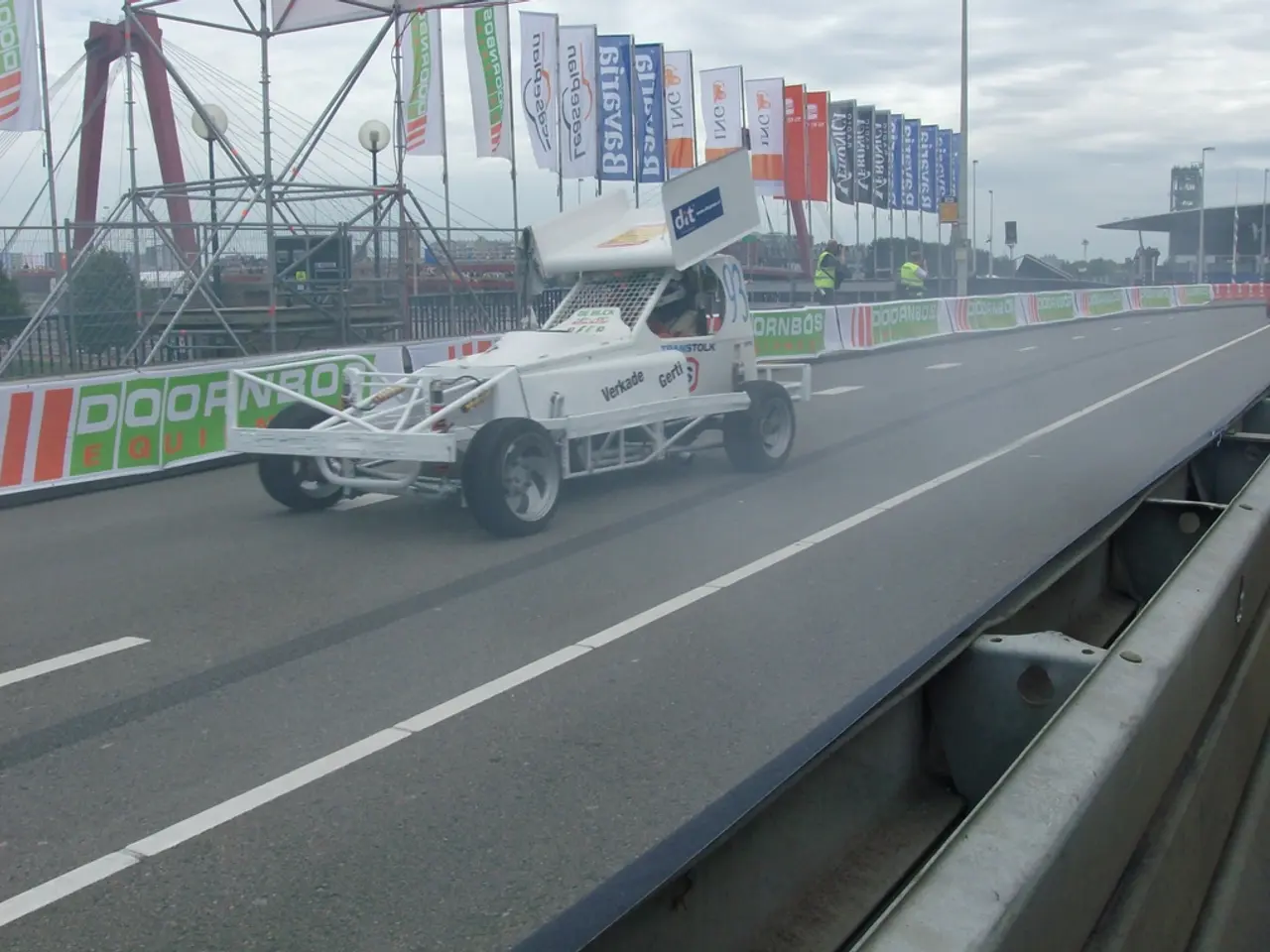Guidelines for Illumination and Identification of Low-set Vehicles Drawn by Animals, Such as Pony Carts
The American Society of Agricultural and Biological Engineers (ASABE) has issued a new recommended practice to enhance the visibility of pony carts used by Amish communities on public roadways. This move aims to increase safety by making these slow-moving vehicles more noticeable to motorized traffic.
Key Recommendations
- Slow-Moving Vehicle Emblem (SMV): An reflective orange triangle with a red border should be mounted on the rear of the cart to indicate it is a slow-moving vehicle traveling at speeds less than 25 mph.
- Reflective Materials: Reflective tape or markings on the rear and sides of the cart to enhance visibility at night or in low-light conditions.
- Lighting Requirements (for use between sunset and sunrise):
- Rear Lighting: Two red tail lamps, visible from at least 500 feet.
- Brake Lights: If the vehicle has a braking system, red brake lights should be operational.
- Turn Signals: While not always required, turn signals or hand signals are recommended to indicate intended turns or stops.
- Front Lights: White lamps visible from a sufficient distance ahead to help oncoming traffic.
- Height and Placement: Lights and reflective materials should be mounted at specific heights (generally between 15 and 72 inches from the ground) for optimal visibility.
- Additional Recommendations: Use of flashing amber lights or lanterns can be considered to further increase conspicuity. Consistent maintenance to ensure all lights and reflectors are clean and functional is also advised.
Other Recommendations
- Yellow retroreflective tape should be placed along the outside of the animal on the vehicle tongue or shaft for visibility.
- To provide greater visibility of low-profile vehicles on curves and over hilltops, an orange flag should be mounted on the left side of the cart.
- Animal-drawn vehicles can be equipped with a battery-operated lighting system, including amber hazard flashers, small headlights, and red taillights for maximum visibility during all conditions.
Community safety leaders have also suggested wrapping retroreflective tape around the shaft of the flag pole for added visibility. Orange flags will typically fade and should be replaced every year as needed.
The goal of the revision was to provide a standardized recommendation with the intent of enhancing the visibility of individuals who operate pony carts on public roads. This recommended practice establishes a unique identification system for slow-moving, animal-drawn vehicles on public roadways.
The rear-facing edges of pony carts should be outlined with retroreflective tape for maximum attention from passing motorists. Retroreflective tape, effective in daylight and at night, can increase the visibility of low-profile vehicles like pony carts.
A study by the National Highway Traffic Safety Administration found that the use of retroreflective tape reduced side and rear impacts into heavy semi trailers by 29 percent, potentially reducing collisions by 7,800 per year.
The Holmes and Wayne counties Amish Safety committees contacted The Ohio State University's Agricultural Safety and Health program to discuss the need for enhanced lighting and marking on low-profile carts. The recommended practice is outlined in ANSI/ASAE EP576, Lighting and Marking of Animal-Drawn Equipment.
For additional information, visit agsafety.osu.edu or request a listing of available fact sheets from your local OSU Extension office. This recommended practice does not devalue or replace cultural or religious values and is intended to provide options for those who wish to add or enhance lighting and marking of their animal-powered vehicles. The revision to the national standard includes low-profile vehicles, specifically pony carts, in addition to larger buggies and wagons, which have been covered by the standard since 2001.
- The usage of retroreflective tape might increase the visibility of low-profile vehicles like pony carts during the day and at night, potentially reducing accidents.
- To improve the conspicuity of slow-moving vehicles on curvaceous roads or over hills, an orange flag could be attached to the left side of the cart.
- The fashion-and-beauty industry could draw inspiration from the unique identification system for slow-moving, animal-drawn vehicles, employing retroreflective materials in their designs for enhanced visibility.
- For maximum noticeability, it's advisable to wrap retroreflective tape around the shaft of the flag pole on pony carts, ensuring it's visible to motorists from all angles.




